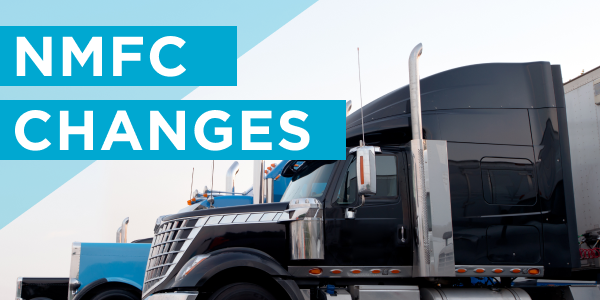
On July 19, 2025, the National Motor Freight Traffic Association (NMFTA) will implement one of the most significant updates to the National Motor Freight Classification (NMFC) system in over 20 years. This update marks a major shift across the LTL industry—moving away from fixed, commodity-based classes toward a more consistent, density-driven classification structure.
King Solutions is committed to helping clients prepare for and understand the impact of these upcoming changes.
Why the NMFC Change Matters
The NMFC is the commodity code assigned to a less-than-truckload (LTL) shipment. Each item listed in the NMFC catalog defines how a product is described and classified. This classification directly impacts:
- Freight class (used for quoting, rating, and billing).
- Carrier acceptance of the shipment.
Freight class determines how LTL shipments are grouped for pricing—ranging from Class 50 (lowest cost) to Class 500 (highest cost). It is the foundation for accurate quoting between shippers and carriers.
What Determines Freight Class?
The NMFTA uses four key factors when assigning freight class:
- Density – The weight of the freight in relation to its volume.
- Handling – How easy or difficult the freight is to move or secure.
- Stowability – How well the freight fits with other shipments or its ability to be stacked.
- Liability – The risk of damage, theft, or hazard during transit.
Some commodities are assigned a fixed class, while others are classified using a density-based scale. Knowing which applies to your freight is critical, as classification directly impacts cost, carrier acceptance, and billing accuracy.
What’s Changing on July 19?
This is the most comprehensive NMFC overhaul in more than two decades. Key updates include:
- Over 2,500 NMFC item numbers will be canceled, merged, or restructured.
- Nearly 100 commodity groups will be impacted.
- A major shift from fixed classifications to density-based assignments.
- The current 11-tier density chart (Class 400–60) will be replaced with a new 13-tier structure (Class 400–50).
- Many products that previously had a static class will now require precise weight and dimensions for accurate classification.
- Roughly 40% of actively used NMFC codes are expected to be affected.
Why the Change?
The goal of this update is to:
- Simplify the freight classification process.
- Align freight class with actual shipping characteristics.
- Increase consistency across the LTL market.
- Reduce reclassification disputes and billing errors.
Over the last several years, many carriers have already adopted this direction by investing in dimensioners and automated measurement tools. This change aims to standardize that approach across the board.
The Freight Classification Development Council (FCDC)—the group responsible for maintaining the NMFC—hosted three public meetings in 2024 to review the updates and gather industry feedback. These changes reflect input from both carriers and shippers.
What Shippers Need to Do
To prepare for the changes going into effect on July 19, shippers should:
- Confirm accurate weight and dimensions for all handling units—this is now critical for proper classification.
- Review current NMFC codes—many will be updated or replaced.
For King Solutions clients, if your existing NMFC codes are affected, a representative will proactively reach out to notify you and guide you through the necessary updates.
King Solutions Is Here to Help
As a trusted logistics partner, King Solutions is ready to support clients every step of the way.
For questions or support, please contact your King Solutions Customer Care representative. The team is available to ensure everything is in place ahead of the July 19 transition.







 Joel Rice
Joel Rice